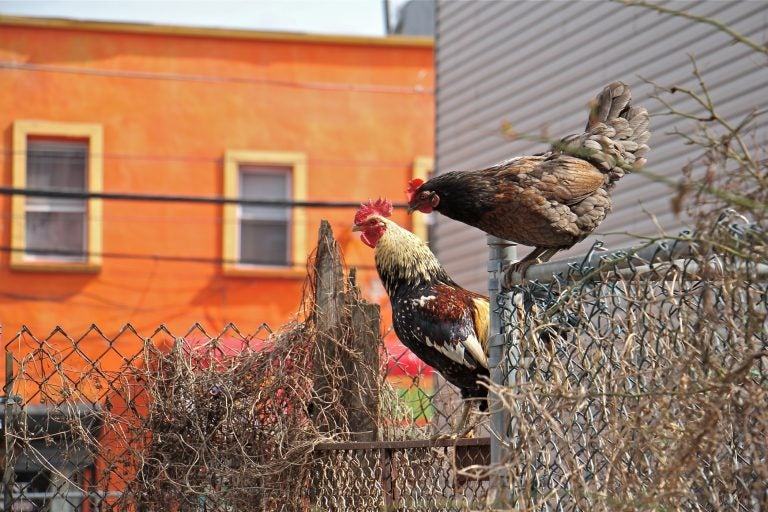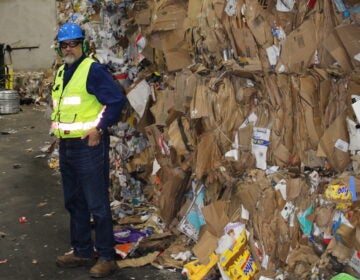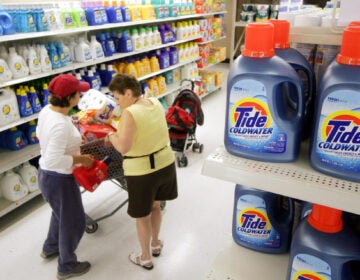Warmer, wetter weather to bring more chicken farms to Pennsylvania
The Department of Environmental Protection released its recent Climate Change Impact Assessment report, which focuses on livestock and watersheds.
Listen 1:01
Chickens leave their enclosure at Dauphin and Waterloo streets. (Emma Lee/WHYY)
Updated April 21
Pennsylvania’s latest climate report projects chicken farms to double by 2050.
The Department of Environmental Protection’s updated Climate Change Impacts Assessment predicts Pennsylvania will continue to get hotter and wetter, with temperatures expected to rise by 4.9 degrees Fahrenheit by 2050, based on 2000 figures. Precipitation in the state is expected to increase 8% to 12% in that same time period.
The DEP released the update to its 2015 climate impact assessment on Monday, which is conducted for the state by the Environmental and Natural Resources Institute at Penn State.
“Effective decision-making for Pennsylvania’s future is decision-making that accounts for the changes that are likely to happen if we don’t reduce greenhouse gas emissions and meet the need to manage them,” said DEP Secretary Patrick McDonnell. “The Climate Impacts Assessment presents a detailed picture of these changes in several key areas.”
This is the third update to the original report mandated by state law and published in 2009.
This version of the report focuses on the impacts to livestock, watershed management and infrastructure.
Poultry plants are expected to double by 2050 as the southern states become too hot to support chicken farms. Hogs, pigs and beef cattle could also increase. Dairy farms are expected to shift from the southeast region to the northwest parts of the state due to rising temperatures.
The combination of the increase in livestock, especially poultry, along with rising rainfalls could lead to more pollution run-off into the Chesapeake and Delaware rivers.
The report stresses the need for upgrades to planning for stormwater management.
The assessment also warns of coastal storm surges in southeastern Pennsylvania damaging infrastructure and increased risks of landslides in southwestern Pennsylvania.
Average yearly rainfall in the state has risen 10% and average temperatures have climbed by 2 degrees Fahrenheit since 1901.
Gov. Tom Wolf announced in 2019 a goal to cut greenhouse gas emissions 80 percent by 2050.
–
This article was updated to clarify temperature information.
 This story is a part of Covering Climate Now’s week of coverage focused on Climate Solutions, to mark the 50th anniversary of Earth Day. Covering Climate Now is a global journalism collaboration committed to strengthening coverage of the climate story.
This story is a part of Covering Climate Now’s week of coverage focused on Climate Solutions, to mark the 50th anniversary of Earth Day. Covering Climate Now is a global journalism collaboration committed to strengthening coverage of the climate story.
WHYY is your source for fact-based, in-depth journalism and information. As a nonprofit organization, we rely on financial support from readers like you. Please give today.





